Old mixed forests as hotspots of biodiversity
Due to their longevity, which ensures exceptional habitat continuity, old beech and oak mixed forests are home to a particularly large number of rare, often less mobile species. In particular so-called „primeval forest relict species“, which are dependent on typical primeval forest structures with a centuries-long development period or maturity of the ecosystem, can still find habitats here.
With a high proportion of old trees, tree hollows, standing and lying deadwood, the native mixed forest provides a favourable habitat for many thousands of species. The older a tree gets, the more diverse its range of structures becomes: large hollows, woodpecker cavities, bird and mammal nests, wood fungi, lichen and mistletoe growth, crevices and cracks, old boreholes, strong dead branches and crown wood. All of this provides a habitat for species-rich life.
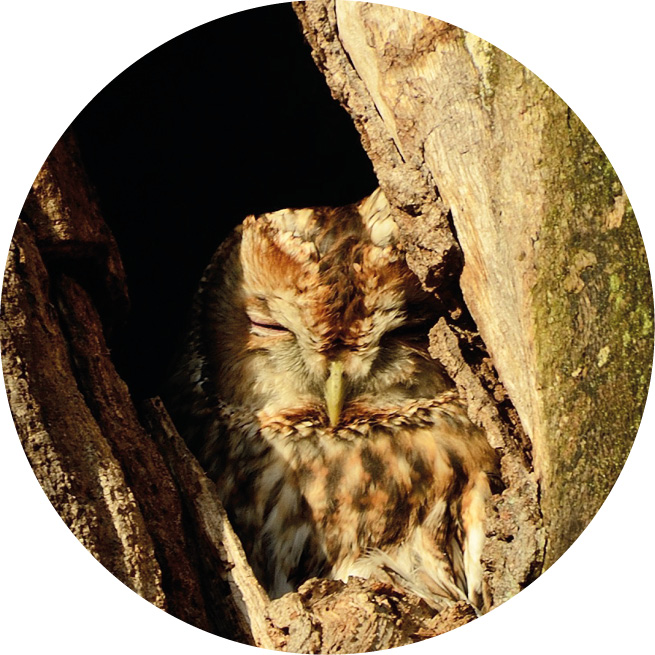
Owl in tree hollow
Tree cavities, whether carpentered by woodpeckers or created by decay processes, provide important habitats for birds, mammals and insects.
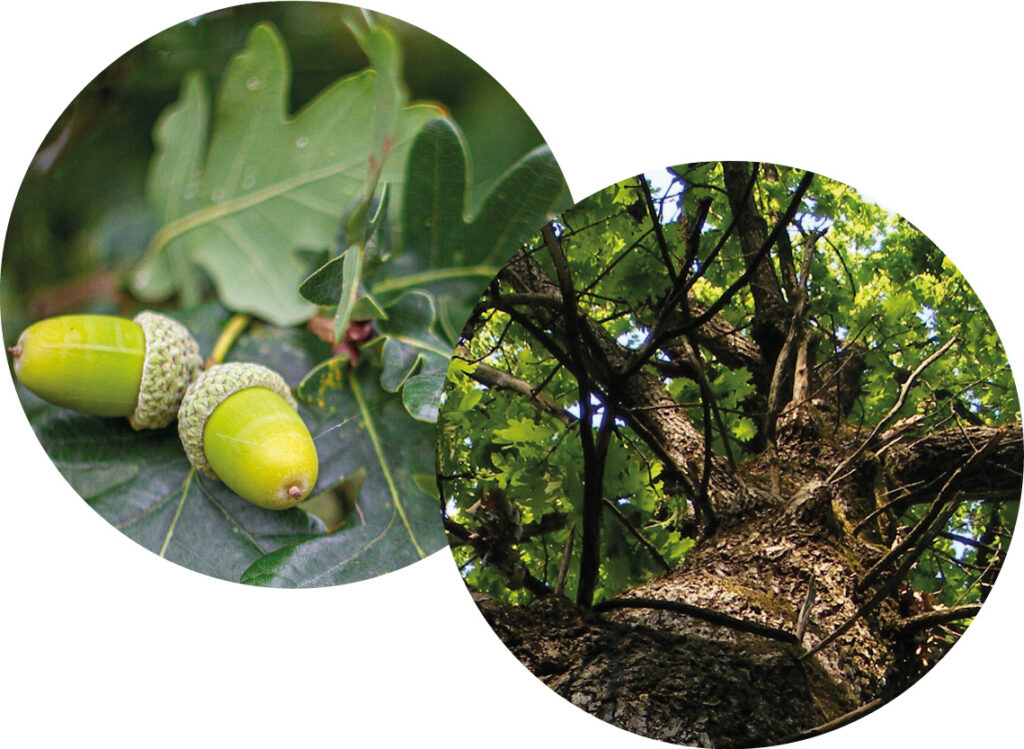
Oak
The native pedunculate and sessile oaks can become up to 1,000 years old. They have their natural habitat in moist as well as in warm-dry locations. Here, their competitive strength is superior to that of the copper beech.
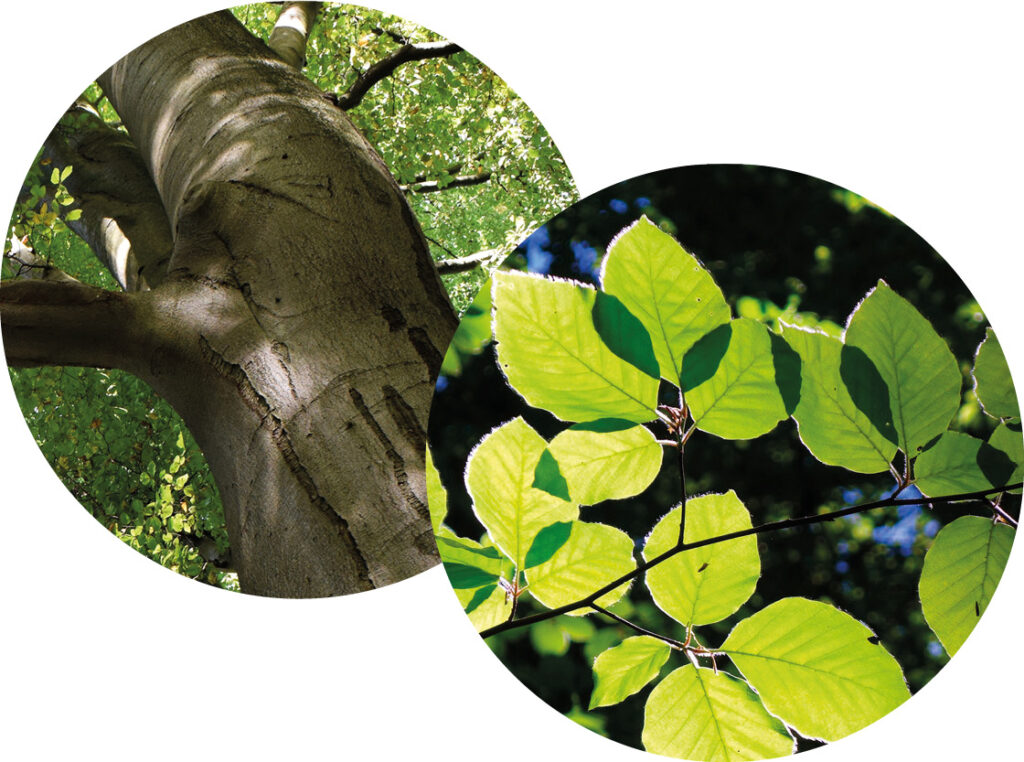
Beech
Beech trees reach a growth height of up to 50 m and can live for more than 300 years. Without human intervention, the beech would dominate the forest in Central Europe thanks to its high adaptability and competitive strength. It can adapt very well to many climatic and site conditions and is therefore the most widespread tree species in the low mountain range.
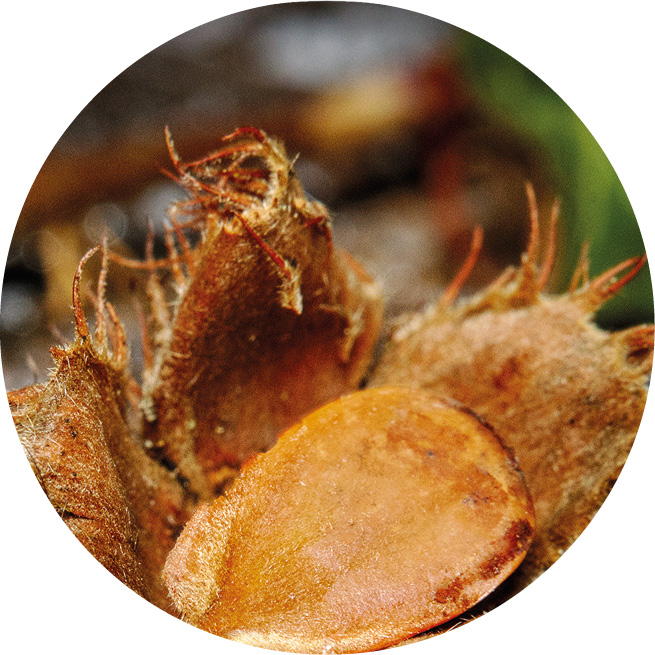
Beechnut
Beechnuts are the fruits of the common beech. They are favoured by birds and rodents as a food source. The open beech infructescence (fruit head) also serves as a shelter for beetles and insects.
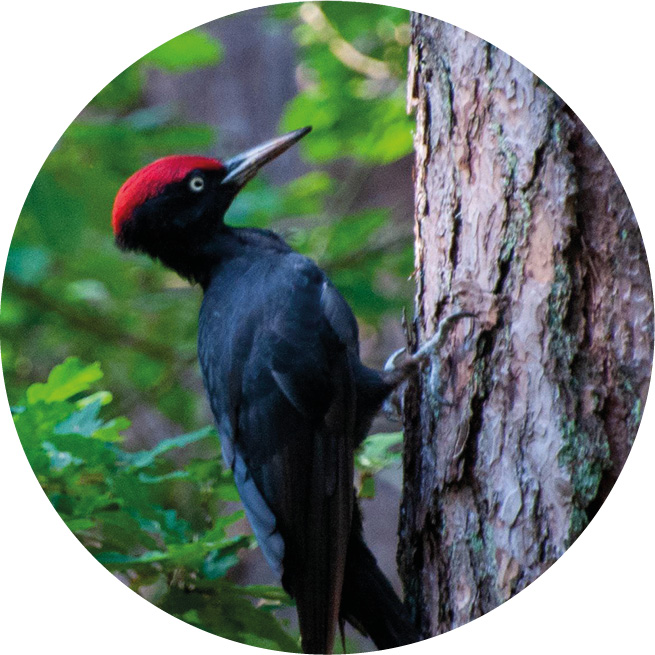
Black Woodpecker
The black woodpecker is the largest woodpecker in our latitudes and measures up to 50 cm. It is very closely tied to old tree. It builds its brood and sleeping cavities 30 to 55 cm deep into tree trunks. Many endangered cave breeders such as stock doves, jackdaws, boreal owls, even bats and wild bees need exactly these cavities for their reproduction and are typical „tenants moving in“ after the woodpeckers leave.
Old beech and oak trees
- provide a livelihood for many endangered and unique animal species.
- are the basis for an extraordinary biodiversity.
- offer a high experience value for people, because truly old forests with a largely undisturbed development have become extremely rare.